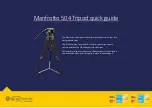
Page 8
Adjustment of shoulder straps
Shoulder-strap adjustment enables the harness to be adjusted to the pilot’s height.
The adjustment buckle is situated low down, near the rear edge of the seat. The
shoulder-straps also support part of the torso weight to improve comfort.
After that you have determined the correct position for the seat and back, adjust
the shoulder straps so that they are in contact with your shoulders, neither too
loose nor too tight.
Adjustment of leg straps
Pull the leg straps tight before starting, but make sure they do not cut in or
squeeze.
Due to a special design the leg straps will not hinder your running at the start.
Because they are tied tight, the front of the seat is lifted up and helps you getting
into the harness.
By slipping back in the gear, the leg straps loosen a bit after start.
Adjustment of chest straps
The adjustment of the harness chest strap controls the distance between
karabiners and affects the handling and stability of the glider.
Excessive tightening the chest strap increases stability but also the risk of twists
following glider collapse, and it also increases the frequency of getting collapses
due to poor feedback from the glider.
The risk of twisting is also strongly affected by the seating position of pilot. Flying
in a laid back (reclined) position makes it much more difficult to react in time to
prevent riser twisting.
With the chest strap in a more closed position the glider also has more tendency to
maintain a stable spiral, lengthening of the chest strap gives more feedback from
the glider but decreases stability.
ICARO paragliders recommends following settings:
Take off weight
< 80kg
80 kg -100 kg
> 100kg
Horizontal distance of
the main karabiners
38 cm – 42 cm
42 cm – 46 cm
46 cm – 50 cm
Seating position and back adjustment:
In this photo you can see how the back and
seat depth adjustments are each subdivided
on two points.
The adjustment that allows you to select the
inclination of the torso with respect to the
vertical flight axis is No. 1.
Adjustment No. 2 varies the angle between
the legs and the back (seating depth),
distributing the loads between the seat and
the lumbar, thereby providing the pilot with greater comfort.




































